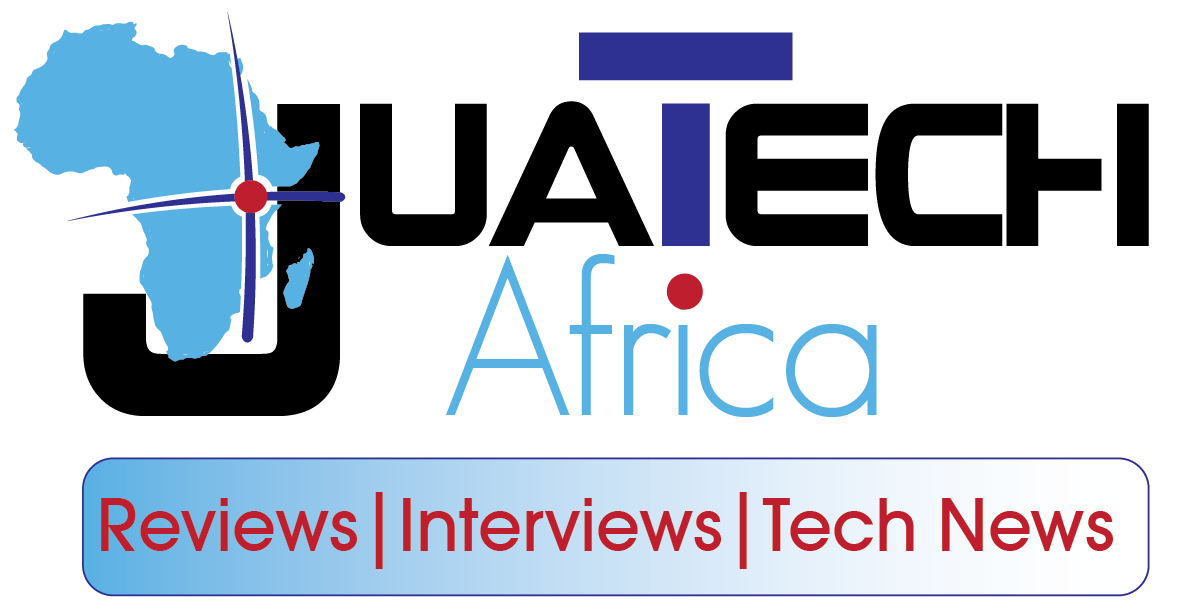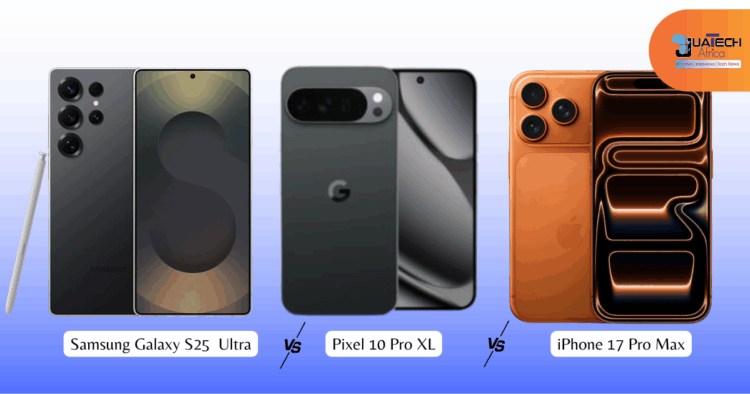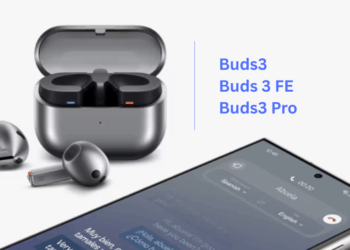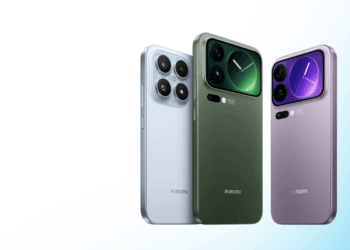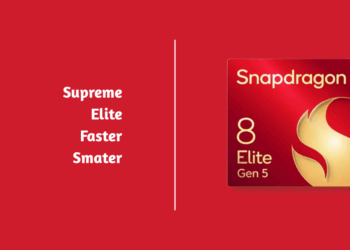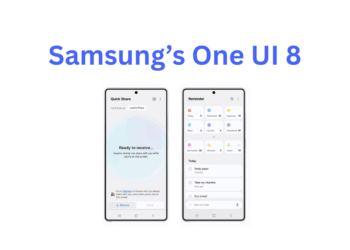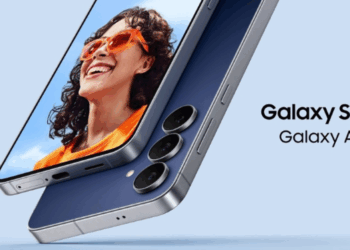Kenya’s Premium Smartphone Moment Has Arrived
Three giants. One decision. In 2025, Kenya’s smartphone market is no longer playing catch-up. It’s leading conversations, shaping demand, and demanding excellence. Buyers want more than specs. They seek value, relevance, and tangible impact in the real world.
The battle for the best flagship smartphone in Kenya for 2025 is fierce. Samsung, Google, and Apple have unleashed their top-tier devices. Each promises innovation. Each claims superiority. But which one truly delivers for Kenyan users?
This article goes beyond hype. We compare the Samsung Galaxy S25 Ultra, Google Pixel 10 Pro XL, and Apple iPhone 17 Pro Max — not just in specs, but also in practical relevance. We examine how these devices function in Kenya’s distinct context, ranging from Nairobi’s fast-paced lifestyle to remote regions where connectivity and functionality are most crucial.
Why This Comparison Matters
Kenyan buyers are smarter. They research and compare specs. They ask tough questions:
- Which flagship offers the best camera for content creation?
- Which phone lasts longest on a single charge?
- Which device supports Safaricom’s 5G and Airtel’s dual SIM? What of eSIM?
- I want a guaranteed smooth experience. Which brand’s ecosystem do I adopt?
- Which brand offers the best resale value in Kenya?
This guide answers those questions. It’s built on verified data from credible, verifiable sources—official OEM brand sources—and personal insights from firsthand experience. It’s layered with valuable insights tailored for Kenya and East African realities.
Flagship Specs Snapshot (2025)
| Feature | Samsung Galaxy S25 Ultra | Google Pixel 10 Pro XL | Apple iPhone 17 Pro Max |
| Display | 6.9-inch AMOLED 2X, 3120×1400, 2600 nits | 6.8-inch OLED, 2992×1344, 3300 nits | 6.9-inch Super Retina XDR OLED, 2868×1320, 3000 nits |
| Chipset | Snapdragon 8 Elite | Tensor G5 | Apple A19 Pro |
| RAM | 12GB / 16GB | 16GB | 12GB |
| Storage | 256GB / 512GB / 1TB | 256GB / 512GB / 1TB | 256GB / 512GB / 1TB / 2TB |
| Rear Camera | 200MP + 50MP + 50MP + 10MP | 50MP + 48MP + 48MP | 48MP + 48MP + 48MP |
| Front Camera | 12MP | 42MP | 18MP |
| Battery | 5000mAh, 45W wired | 5200mAh, 45W wired | 4900mAh, 25W wired |
| OS | Android 15 (One UI 7) | Android 16 | iOS 26 |
| Build | Titanium frame, Gorilla Armor 2 | Aluminum frame, Gorilla Glass Victus 2 | Titanium frame, Ceramic Shield 2 |
| Unique Features | S Pen, Circle to Search, Audio Eraser | Gemini AI, Magic Cue, Camera Coach | Apple Intelligence, Action Button, Center Stage |
| Price (Global) | From $1178 | From $1199 | From $1200 |
Samsung Galaxy S25 Ultra Review: Precision Meets Power
From Nairobi’s skyline to the extensive lowlands of the Tana Delta, the Galaxy S25 Ultra is built for users who demand power, precision, and presence. It’s not just a flagship — it’s a mobile command center for Kenyan creatives, strategists, and mobile-first professionals.
In the race for the best flagship smartphone in Kenya 2025, Samsung’s S25 Ultra sets the bar for premium smartphones in Kenya — combining raw power with refined utility.
Design & Build: Titanium Toughness
Samsung wraps the S25 Ultra in Grade 5 titanium, reinforced by Gorilla Armor 2. It’s sleek, flat-edged, and fingerprint-resistant. At 218g, it’s heavier than most — but that weight signals durability. Notably, it is the lightest of the trio.
Whether you’re navigating dusty commutes in Kitengela, shooting wildlife in Meru National Park, or scaling up Mt. Kenya, this build inspires confidence. It’s a phone that feels like it was made for Kenya.
Display & Camera: Visual Brilliance
The 6.9-inch AMOLED 2X display features a 3120×1400 resolution and a peak brightness of 2600 nits. Even under the harsh equatorial sun, visibility is flawless.
Camera setup:
- 200MP main sensor
- 50MP ultrawide
- 10MP Telescope
- 50MP Periscope Telephoto lenses
- 12MP front camera
Zoom is sharp. Low-light performance is exceptional. Video stabilization rivals DSLRs. For Kenyan content creators, this is a mobile production studio.
Performance & Battery: Built to Endure
Powered by the Snapdragon 8 Elite, paired with up to 16GB RAM, the S25 Ultra scores:
- AnTuTu: 2,207,809
- GeekBench 6: 2,312 (single-core), 7,890 (multi-core)
- Processor Speed: 4.47Ghz clock speed, the fastest in any phone in 2025.
It’s fast. Responsive. Reliable.
The 5000mAh battery lasts a whole day. Charging is efficient, with 45W wired and 15W wireless options. Whether you’re in Nairobi or Namanga, power won’t be a problem.
Unique Features: Smart Tools That Matter
Samsung’s Galaxy AI suite is practical:
- Circle to Search simplifies discovery
- Audio Eraser cleans noisy recordings
- Now, Brief summarizes your day
And yes — the S-Pen remains. For professionals, it’s a productivity weapon: annotate, sketch, sign, create.
Verdict: The Android Apex
In the race for Kenya’s best flagship smartphone of 2025, Samsung doesn’t just compete — it dominates. It’s the most complete Android flagship. For Kenyan users who value performance, creativity, and longevity, the S25 Ultra is the clear leader.
Pixel 10 Pro XL Review: AI-First, Africa-Ready
From Nairobi’s creative studios to Kisumu’s digital classrooms, the Pixel 10 Pro XL is built for thinkers, makers, and mobile-first innovators. It’s not chasing specs — it’s chasing intelligence. In 2025, that shift matters.
For Kenyan photographers, educators, and digital entrepreneurs, this device isn’t just smart — it’s intuitive, adaptive, and empowering. It’s a bold contender in the race for the best flagship smartphone in Kenya 2025.
Design & Build: Sleek, Light, Durable
Crafted with a recycled aluminum frame and Gorilla Glass Victus 2, the Pixel strikes a balance between elegance and resilience. At just 232.5g, it shared the same weight as the iPhone Pro Max. The curved edges feel natural. The matte finish adds grip.
It’s understated — but purposeful. For users who prefer subtle strength, it’s a quiet powerhouse.
Display & Camera: Bright, Sharp, Smart
The 6.8-inch OLED display achieves a record 3,300 nits of peak brightness. Resolution is crisp at 2992×1344p. Whether you’re editing reels in Eldoret after adventures in the Rift Valley or presenting slides in Mombasa to Venture Capitalists, visibility is flawless.
Camera setup:
- 50MP main sensor
- 48MP ultrawide
- 48MP telephoto
- 42MP front camera
But it’s the software that shines. Camera Coach, Magic Cue, and Best Take use AI to enhance every shot. Distractions disappear. Lighting adjusts. Faces sharpen. It’s photography, reimagined.
Performance & Battery: Smart Efficiency
Powered by the Tensor G5, paired with 16GB RAM, the Pixel scores:
- AnTuTu: 1,423,216
- GeekBench 6: 1,998 (single-core), 6,412 (multi-core)
- Gemini AI: 1.2 billion on-device queries/day globally
The 5200mAh battery lasts up to 53 hours. Charging is fast: 45W wired, 25W wireless, Qi2 support. It’s built for long days, low bandwidth, and remote work.
Unique Features: AI That Works
Google’s Gemini AI powers:
- Live Translate for Swahili, Kikuyu, and more
- Magic Eraser for photos
- Now Playing for ambient music ID
- Satellite SOS for remote safety
Verdict: The Smartest Flagship
In the race for Kenya’s best flagship smartphone of 2025, Pixel 10 Pro XL doesn’t just think — it anticipates, adapts, and delivers. For users who value intelligence, photography, and battery life, it’s a visionary tool redefining premium smartphones in Kenya. As far as the pure Android experience is concerned, this handset offers the best experience in the Pixel series to date.
iPhone 17 Pro Max Review: Polished, Powerful, Premium
From Westlands boardrooms to furnished Kilimani apartments, and privately owned Record Studios, the iPhone 17 Pro Max is more than a device — it’s a status symbol, a creative tool, and a performance benchmark. In 2025, Apple’s flagship doesn’t just look good. It executes flawlessly.
For Kenyan professionals, creatives, and ecosystem loyalists, this is the phone that blends refinement with raw capability. It’s a top-tier contender in the race for the best flagship smartphone in Kenya 2025.
Design & Build: Refined Strength
Apple’s Grade 5 titanium frame is lighter than Samsung’s, yet just as rugged. The Ceramic Shield 2 offers 4 times the crack resistance and 3 times the scratch protection. It’s sleek, symmetrical, and unmistakably premium.
At 233g, it strikes a balance between weight and elegance. It feels expensive and heavy — because it is.
Apple went all the way to appeal to a new segment of users, with a bold choice of colors: Silver, Cosmic Orange, and Deep Blue. I find the Cosmic Orange quite bold and eccentric. It stands out the moment you pull out your device, aside from the prominent camera bulge on the back.
Display & Camera: Cinematic Precision
The 6.7-inch Super Retina XDR OLED display delivers a resolution of 2688×1242 pixels, with a peak brightness of 1200 nits. That’s enough to cut through Kenya’s bright midday sun. Using it outdoors should be no problem at all. HDR10 and Dolby Vision support make visuals pop.
Camera setup:
- Triple 48MP Fusion sensors
- 8x optical zoom
- Smart HDR 6, ProRes RAW
- 18MP front camera with Center Stage
The triple 48MP Fusion sensors deliver cinematic depth, true-to-life color, and razor-sharp detail. With 8x optical zoom, Smart HDR 6, and ProRes 8K recording, it captures everything from bustling Nairobi streets to Night Vigils, candlelit memorials, and requiems, capturing moments with stunning clarity. Sensor-shift stabilization ensures smooth footage, even handheld. Skin tones remain natural, shadows are nuanced, and highlights pop. For Kenyan filmmakers, vloggers, and influencers, this isn’t just a camera — it’s a mobile cinema rig with studio-grade precision.
Performance & Battery: Speed Meets Stability
The Apple A19 Pro chip is a beast. Built on a 3nm architecture, it delivers:
- GeekBench 6: 2,498 (single-core), 9,846 (multi-core)
- AnTuTu: 2,089,112
- Clock Speed: 4.26 GHz, almost matching Galaxy S25 Ultra’s record high clock speed.
What do these scores mean?
- GeekBench measures CPU power — the higher the score, the faster the phone handles tasks.
- AnTuTu tests overall performance — graphics, memory, UX. The iPhone 17 Pro Max ranks among the fastest phones on the Planet.
Battery: 4900mAh, with 25W wired, 15W MagSafe. It’s not the longest-lasting — but it’s consistent. iOS 26 optimizes power intelligently.
Unique Features: Ecosystem Excellence
Apple Intelligence brings:
- Live Translation
- Smart HDR
- Image generation
- Action Button customization
But rollout in Kenya is limited. Some features are US-only for now.
Verdict: The Polished Performer
In the race for Kenya’s best flagship smartphone of 2025, the iPhone 17 Pro Max is the most refined. For users deep in Apple’s ecosystem — creatives, executives, and loyalists — it’s a premium tool that delivers elegance, speed, and cinematic power.
Kenya-Focused Buyer Insights: What Truly Matters
Flagship phones in Kenya aren’t just about specs — they’re about survivability, compatibility, and long-term value. From SIM flexibility to battery endurance and camera relevance, here’s what Kenyan buyers must consider before investing in the best flagship smartphone in Kenya 2025.
Dual SIM, eSIM & 5G: Connectivity That Counts
Kenyan users juggle multiple lines — Safaricom for data, Airtel for calls. That’s why dual SIM support is non-negotiable.
- Samsung Galaxy S25 Ultra: Physical SIM + eSIM
- Pixel 10 Pro XL: Physical SIM + eSIM
- iPhone 17 Pro Max: Dual eSIM only
While Safaricom and Airtel now support eSIM provisioning, many users still rely on physical SIMs. Samsung and Pixel offer greater flexibility, especially for travelers and business users.
On 5G, all three support Safaricom’s n78 band and future Airtel rollouts. In Nairobi, speeds of up to 750Mbps are available on compatible plans. In rural zones, fallback to 4G remains seamless.
Verdict: For connectivity, Samsung and Pixel win — offering broader SIM options and smoother network transitions.
Battery Life & Repairs: Endurance Meets Access
Battery life is survival. Kenyan users face power cuts, long commutes, and off-grid travel. Here’s how the flagships stack up:
- Pixel 10 Pro XL: 5200mAh, up to 53 hours
- Samsung S25 Ultra: 5000mAh, up to 45 hours
- iPhone 17 Pro Max: 4900mAh, up to 39 hours
Pixel leads in endurance, thanks to adaptive AI power management. Samsung follows with fast charging and wireless support. iPhone trails — but offers benefits from the MagSafe ecosystem.
Repairs? Samsung and Pixel score Class B on teardown ease (iFixit). The iPhone falls into Class C — it’s more challenging to repair and more expensive to service.
In Nairobi, Samsung has seven authorized centers, Pixel has three, and Apple has two. Third-party support favors Android.
Verdict: For longevity and serviceability, Pixel leads, followed by Samsung.
Camera Use Cases in Kenya: Shoot With Purpose
Kenya is a photographer’s playground — from low-light cityscapes to wildlife in Samburu and vibrant street scenes in the CBD, amidst the hustle and bustle.
- Samsung’s 200MP sensor excels in zoom, detail, and stabilization. Ideal for wildlife, events, and motion. You can achieve a maximum 100x zoom, with AI processing for the best photography experience.
- Pixel’s AI camera shines in low light, portraits, and auto-enhancement. Great for casual content creators and social media users.
- iPhone’s Fusion system delivers cinematic video, accurate skin tones, and ProRes 8K. Perfect for filmmakers and influencers.
Pixel’s Camera Coach guides users in real time. Samsung offers manual pro controls. iPhone delivers studio-grade video with minimal effort.
Verdict:
- Samsung Galaxy S25 Ultra wins for versatility and control
- Pixel 10 Pro XL for simplicity and low-light mastery. Its computational camera capabilities is revolutionary.
- iPhone 17 Pro Max for cinematic storytelling.
East Africa Layering: Tech Beyond Borders, Influence Beyond Specs
Flagship smartphones are no longer just personal devices — they’re regional tools of transformation. In Uganda, Tanzania, Rwanda, and across East Africa, mobile technology is shaping education, commerce, governance, and storytelling. The race for the best flagship smartphone in Kenya 2025 is also a race for regional relevance, resilience, and reach.
Connectivity & AI Use: Smart Tools for Smart Terrain
East Africa’s geography is complex. From the volcanic ridges of Karisimbi to the remote islands of Lake Victoria, right to the disputed Migingo Island, connectivity isn’t guaranteed — but smartphones are everywhere.
That’s where Satellite SOS becomes a game-changer.
- Samsung and iPhone now support emergency satellite messaging — vital for conservationists, journalists, and humanitarian teams working off-grid.
- Pixel’s Gemini AI leads in real-time translation across Swahili, Luganda, and Kinyarwanda — enabling cross-border collaboration, education, and commerce.
In Tanzania, where over 65% of internet access is mobile-only, AI tools like Camera Coach and Live Translate aren’t luxuries — they’re enablers. In Rwanda, where digital literacy is rising fast, smart features help bridge language gaps and empower fieldwork.
Threats and Setbacks:
Limited satellite coverage and a slow rollout of AI features in local dialects.
Opportunities:
Localized AI, offline-first tools, and regional partnerships with telcos and ministries.
Ecosystem Loyalty: Android vs Apple in EA Markets
East Africa is Android territory — but the loyalty split is evolving.
- Android market share: 86% (Kenya), 89% (Uganda), 91% (Tanzania), 88% (Rwanda)
- Apple: 11–14%, concentrated in urban hubs like Kampala, Kigali, and Nairobi’s Westlands.
Samsung dominates in terms of brand trust, repair access, and retail presence.
Pixel is rising among developers, educators, and creators — especially in Rwanda’s innovation hubs and Uganda’s tech incubators.
Apple remains aspirational, but faces barriers, including high costs, limited-service centers, and ecosystem lock-in.
As JuaTech Africa, we see this as a strategic inflection point. Our mission: to educate, empower, and elevate East African buyers with verified insights, regional comparisons, and practical guidance. We’re not just reviewing phones — we’re shaping how mobile technology is understood, adopted, and leveraged across the continent.
Future Possibilities:
- AI-powered Swahili-first interfaces
- Flagship phones as tools for digital inclusion
- Regional benchmarks that reflect African realities — not Western assumptions.
In the race for the best flagship smartphone in Kenya 2025, regional mastery isn’t optional. It’s the new frontier. As devices become a necessity for effective communication, learning, and connection, we look forward to the changing dynamics. More people can afford flagship phones and benefit from their premium offerings.
Apple and Samsung’s past flagship models are experiencing a resurgence, with many users enjoying superior camera performance, robust processing capabilities, and optimized performance. Others are saving hard for the newer models, or better still, getting into credit, staggered payment models.
Africa’s Mobile Tech Reality: Innovation Must Meet Relevance
In 2025, the global spotlight shines on three flagship devices — Samsung Galaxy S25 Ultra, Pixel 10 Pro XL, and iPhone 17 Pro Max. But beneath the benchmark scores and AI demos lies a deeper question: Are these devices built for Africa — or merely sold to it?
Africa is not a fringe market. With 1.2 billion people, 70% of whom are under 30 years, and mobile-first internet adoption exceeding 85%, it’s a continent of digital urgency. Yet global product design still leans West — optimized for stable power, unlimited data, and premium ecosystems.
What Africa Needs — and What Flagships Miss
African buyers navigate realities that global reviews rarely address. These aren’t fringe cases — they’re the daily norm for hundreds of millions across the continent.
- In Kenya, 78% recharge via solar or shared outlets. eSIM adoption is limited by device compatibility and operational challenges.
- In Uganda, 60% juggle multiple SIMs for cost and coverage.
- In Rwanda, 60% of smartphones are second-hand, serviced by informal tech hubs.
- In Nigeria, over 75 million users rely on prepaid bundles, and dual SIM is standard across all income tiers.
- In Egypt, mobile penetration exceeds 100%, yet repair access outside Cairo remains fragmented.
- In South Africa, data costs rank among the highest in Africa, making offline-first tools essential for low-income users.
- In Sudan, where infrastructure is fragile, battery life and offline resilience are survival tools, not specs.
Yet Apple still prioritizes eSIM-only setups, locking out millions who rely on physical SIMs. AI features often exclude Swahili, Yoruba, Amharic, Hausa, and Zulu — languages spoken by over 400 million people in Africa. Satellite SOS is promising, but coverage across Turkana, Karamoja, Serengeti, and Darfur remains patchy or nonexistent.
These aren’t just oversights — they’re missed design opportunities.
Africa’s Unique Opportunity: Wake-Up Call for Global Tech
Africa’s mobile challenges are design prompts, not limitations. Flagships must evolve:
- Modular batteries for solar charging
- AI tuned for African languages
- Repairable designs with local supply chains
- Offline-first UX for data-scarce environments
Samsung and Pixel are inching closer — with better battery life, dual SIM support, and AI translation. But the future belongs to those who design for Africa, not just distribute to it. Xiaomi, on a charm offensive, is making inroads and could become a primary force in the mid-range and flagship smartphone markets across Africa. Evidence? Recently, they launched a flagship killer with their POCO X7 Ultra, which offers many flagship features at a fraction of the cost of Samsung, Pixel, and Apple’s models. OnePlus and Nothing, too, are eyeing the African market for a slice with their mouth-watering offers.
Africa isn’t waiting. It’s demanding relevance. And JuaTech Africa is here to amplify that demand — with data, insight, and unapologetic clarity. Again, without fear or contradiction, Nothing, OnePlus, and Xiaomi seem to be providing answers that Africa has been crying out for.
In the race for the best flagship smartphone in Kenya 2025, the real winner will be the one that understands Africa’s terrain, languages, and aspirations — not just its market potential.
Final Verdict: The Ultimate Flagship for Kenya in 2025
After dissecting specs, testing real-world relevance, and layering regional realities, one truth stands clear: Kenyan buyers need more than premium polish — they need strategic utility.
- iPhone 17 Pro Max is a cinematic powerhouse. Its video quality, build precision, and ecosystem integration are unmatched. But it’s designed for controlled environments, not power-scarce, multi-SIM, mobile-first realities.
- Samsung Galaxy S25 Ultra is a technical marvel. Its 200MP camera, stylus support, and repair ecosystem make it a strong contender. But its AI features, battery endurance, and contextual intelligence still lag behind Google’s offering.
- Pixel 10 Pro XL, however, is the only device that feels built for Kenya. It delivers:
- 53-hour battery life — the longest of the trio
- Dual SIM + eSIM flexibility — ideal for Safaricom and Airtel users
- Gemini AI — tuned for Swahili, offline translation, and contextual smarts
- Camera Coach + Best Take — empowering everyday creators
- Repairability Class B — with growing support in Nairobi and Mombasa.
From rural areas relying on solar-powered setups to Nairobi’s high-rise buildings in the CBD to the lush gated estates, Pixel adapts, empowers, and endures.
Verdict:
For Kenyan buyers who demand intelligence, longevity, and local relevance, the Pixel 10 Pro XL is the undisputed flagship of 2025. It’s not just smart — it’s strategic.
Why Galaxy S25 Ultra & iPhone 17 Pro Max Fall Short | A Thought Leadership Breakdown
iPhone 17 Pro Max
- eSIM-only: Incompatible with millions relying on physical SIMs
- Lowest battery life: Just 39 hours — impractical for off-grid users
- Limited repair access: Only 2 official centers in Kenya
- No Swahili/Amharic support in Siri or Translate
- High cost of ownership: Accessories, repairs, and ecosystem lock-in
Essentially, the iPhone 17 Pro Max remains a premium device for the elite few who can afford it and are drawn to its uniquely closed ecosystem.
Samsung Galaxy S25 Ultra
- AI features lag: No Gemini-level contextual intelligence
- Battery life lower than Pixel: 45 hours vs Pixel’s 53 hours.
- Camera complexity: Pro features overwhelm casual users
- One UI lacks offline-first tools for data-scarce environments
- Still no native African language support in voice assistant
JuaTech Africa stands firm:
Flagships must serve the terrain, not just the trend. In 2025, THE Pixel 10 Pro XL wins Best flagship smartphone Kenya 2025 — not by hype — but by relevance. Read our exclusive Smartphone Buying Guide in 2025.

